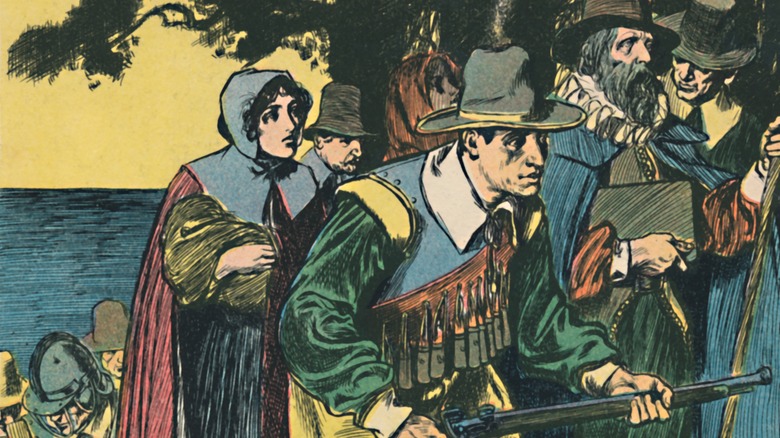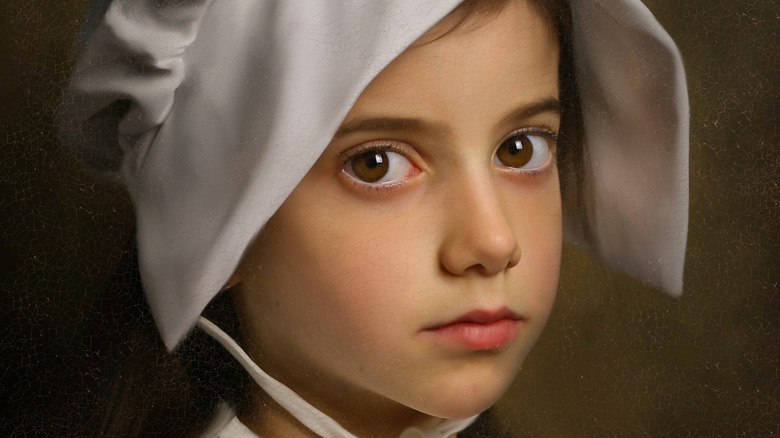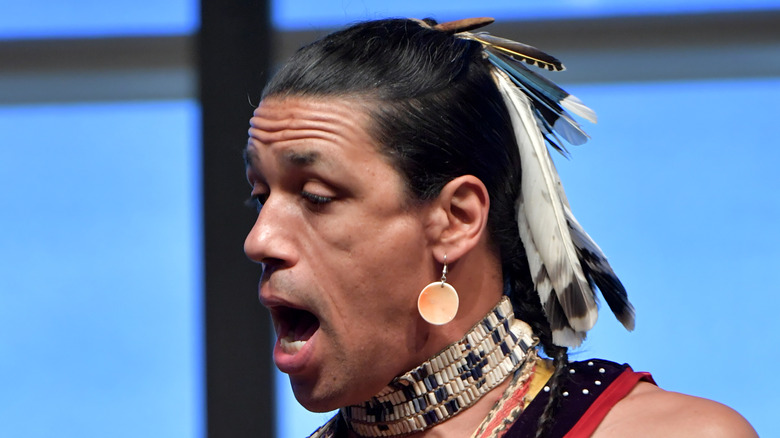The First Thanksgiving Didn't Happen Like You Think
Toward the end of each November, families gather all across the United States to celebrate Thanksgiving. Usually, turkey is the main meal, along with things like stuffing and pie. Although it can be a time of drama, depending on dynamics, it is usually a joyous occasion with people giving thanks for the things in their lives and the country that they live in. The story about the first Thanksgiving is often told — the one about how the Pilgrims and the Native Americans gathered together to feast to celebrate the fact that the newcomers survived their first year in their new land.
It's a great story and it has been shown in many different forms, including a Charlie Brown television special. There's a problem, though. It's not accurate. The fact is, celebrating Thanksgiving has only been something that has been done since Abraham Lincoln was in office (per History), and it has been changed over the years to erase the atrocities that were perpetuated on the Indigenous people by the colonizers who came from Europe. The real story is dark.
The Pilgrims were not like they are often portrayed
The first thing that people need to be aware of is that Pilgrims did not dress as they are often portrayed, with buckles on their hats. Nor did they wear only black and white clothing. Their sense of style was as colorful as ours today. Yes, the men did wear hats, but they were sans buckles — it was the Puritans who preferred that ostentatious display, per Ripley's. Oh, and the Pilgrim moniker didn't start being used until the 1800s. They usually called themselves "first comers" or "forefathers" at the time.
The tribe that helped the Pilgrims, the Wampanoag, made the alliance purely in an effort to help shore up their ranks. Their numbers had been ravaged by a plague and they sought an alliance to help protect them against another tribe, the Narragansett. The idea that they would eat with the Pilgrims would also mean that they would willingly accept colonialism, which is not the case, per Smithsonian Magazine. While the Wampanoag tribe still exists, they endured many years of colonial overreach that included the deaths of many members. The newcomers believed themselves to be divinely inspired to take the land for their own. The entire Native American community is still reeling from all of this even to this day.
The Wampanoag tribe still exists today
So what was the real Thanksgiving like? The first myth is that this was the first contact between the former Europeans and the Native Americans. No; that had happened several times before, and members of the Wampanoag tribe had even made their way to Europe and back before the Pilgrims came, per Smithsonian Magazine. There were some who spoke English. That renders the original story as untrue.
Celebrating Thanksgiving by feasting was not something that was done back then. Instead, fasting was more the norm. That first feast was actually considered a "rejoicing," says The New Yorker. It was not until Abraham Lincoln made the holiday part of American culture — it was an effort to unite a country split into two due to the Civil War — that people started piling the food onto the dinner tables and spending time talking with each other. Watching a football game on an empty stomach would not be fun for anyone to do.
The Thanksgiving feasts continue each year in America. While some people might grouse about having to be with people they are not that crazy about, the real victims are the Wampanoag tribe members. They have been cast aside in favor of a false narrative, and they resent Thanksgiving as a result. It's not hard to understand their anger.


